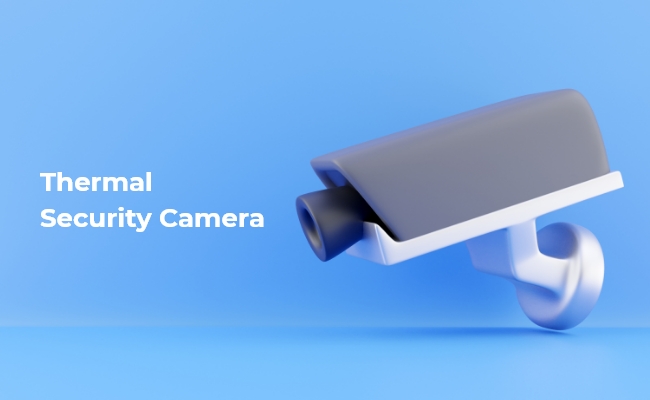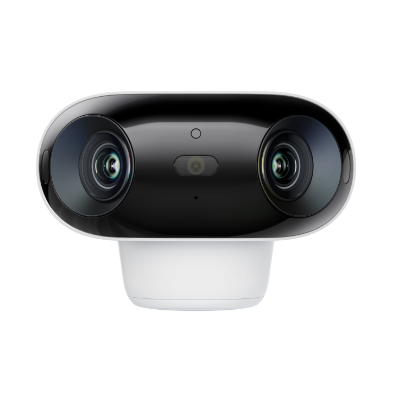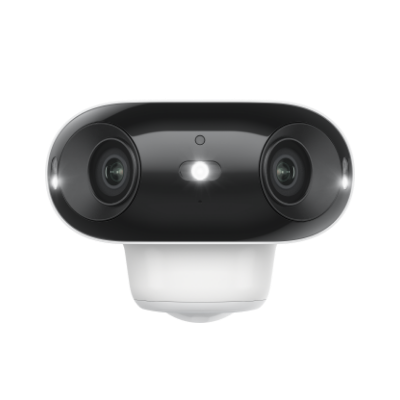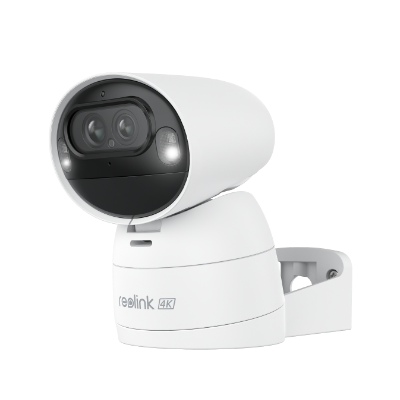Thermal Security Camera: 24/7 Vigilance

Thermal security cameras have emerged as a game-changer in the world of surveillance, offering unparalleled round-the-clock vigilance and enhanced security measures. These advanced imaging devices harness the power of thermal technology to detect and monitor heat signatures, providing a reliable and effective solution for a wide range of applications.
In this comprehensive article, we look into the realm of security thermal cameras, exploring their functionality, benefits, and practical implementation.
What are Thermal Security Cameras?
Thermal security cameras, also known as thermal imaging cameras, are specialized devices that capture infrared radiation emitted by objects, converting it into visible images. Unlike traditional visible-light cameras, these cameras do not rely on ambient light conditions, making them highly effective in low-light or complete darkness scenarios.
Thermal cameras can detect and display temperature variations, allowing them to distinguish between warm objects, such as people or animals, and their cooler surroundings.
How Thermal Imaging Security Cameras Work
Thermal imaging security cameras operate on the principle of detecting infrared radiation, which is emitted by all objects with a temperature above absolute zero. These cameras are equipped with several key components that work together to produce thermal images:
- Infrared Sensor: The infrared sensor is the heart of the thermal camera, responsible for detecting the infrared radiation emitted by objects in its field of view.
- Optics/Lens: The optics or lens system collects and focuses the infrared radiation onto the infrared sensor, ensuring a clear and sharp thermal image.
- Image Processor: The image processor is a specialized computer that converts the raw data from the infrared sensor into a visible thermal image, displaying temperature variations in different shades or colors.
- Thermal Imaging Sensor: This specialized sensor converts infrared radiation into electrical signals, which are then processed by the image processor to create the final thermal image.
Where to Use Thermal Security Camera System
Thermal security cameras find applications in a wide range of scenarios where traditional visible-light cameras may be limited or ineffective. Some common use cases include:
- Building and Construction Sites: Thermal cameras can monitor construction sites for potential safety hazards, such as overheating equipment or fire risks, ensuring a safer working environment.
- Industrial and Manufacturing Settings: In industrial facilities, thermal cameras can detect overheating machinery, leaks, or other potential hazards, enabling proactive maintenance and preventing costly downtime.
- Firefighting: Thermal cameras are invaluable tools for firefighters, allowing them to identify hotspots, locate individuals trapped in smoke-filled environments, and assess the spread of fires more effectively.
- Health Care: In healthcare settings, thermal cameras can be used for non-invasive temperature screening, aiding in the early detection of potential health concerns.
- Environmental and Wildlife Monitoring: Thermal cameras can be employed in ecological studies and wildlife monitoring, providing valuable insights into animal behavior and population dynamics without disturbing their natural habitats.
- Surveillance: In security and surveillance applications, thermal cameras can effectively monitor premises, detect intruders, and provide critical information to law enforcement agencies, even in complete darkness or challenging weather conditions.
Benefits of Thermal Camera
Thermal security cameras offer numerous advantages that make them invaluable assets in various industries and applications. Here are some key benefits:
Enhanced Night Vision Capabilities
One of the primary advantages of thermal cameras is their ability to operate effectively in complete darkness or low-light conditions. Unlike traditional visible-light cameras that rely on ambient light, thermal cameras can capture clear images based on heat signatures, enabling round-the-clock surveillance and monitoring.
Improved Detection and Identification
Thermal cameras can detect and identify potential threats or anomalies based on their heat signatures, even when they are obscured by obstacles or camouflage. This makes them particularly useful in security and surveillance applications, as well as in search and rescue operations.
Long-Range Surveillance
Many thermal cameras are designed with advanced optics and sensors that allow for long-range surveillance and monitoring. This capability is particularly valuable in applications where maintaining a safe distance is essential, such as wildlife monitoring or industrial inspection.
Weather and Environmental Resilience
Thermal cameras are not affected by adverse weather conditions or environmental factors that can impair the performance of traditional visible-light cameras. They can operate effectively in fog, smoke, or dust, making them ideal for applications in challenging environments.
Non-Invasive Detection
Thermal cameras are non-invasive and do not emit any harmful radiation, making them safe for use in various settings, including healthcare facilities and sensitive environments.
Essential Factors for Installing Thermal Surveillance Cameras
When considering the installation of thermal security cameras, several key factors must be taken into account to ensure optimal performance and effective surveillance:
Environment
The environment in which the thermal cameras will be installed plays a crucial role in determining the appropriate camera model and configuration. Factors such as ambient temperature, humidity, and potential obstructions should be carefully evaluated to ensure reliable and accurate thermal imaging.
Budget
Thermal security cameras can be a significant investment, and it is essential to consider the overall budget and long-term costs associated with their installation, maintenance, and operation. Careful planning and budgeting can help maximize the return on investment and ensure the system meets the desired security and surveillance requirements.
Security Needs
A thorough assessment of the specific security needs and requirements is crucial when selecting and installing thermal security cameras. This includes identifying potential threats, determining the areas or assets that require monitoring, and establishing the desired level of surveillance coverage.
Monitoring Range
Thermal cameras are available with varying lens options and sensor resolutions, affecting their monitoring range and image quality. It is important to select the appropriate camera model and configuration based on the desired monitoring range and the level of detail required for effective surveillance.
Alternatives to Thermal Home Security Camera
While thermal security cameras offer exceptional performance in various scenarios, they may not always be the most suitable or cost-effective solution for home security applications. In such cases, alternative night vision security cameras can provide reliable and affordable options:
Best Alternatives to Night Vision Thermal Camera - Reolink Argus 4 Pro
Night vision security cameras offer a complementary way to monitoring, especially in low-light situations. Reolink's innovative ColorX technology optimizes light acquisition, allowing the Argus 4 Pro to provide full-color images in low light without the need for spotlights. This produces evening photographs that are as clear and vibrant as those captured during the day. Moreover, Argus 4 Pro offers the smoothest 4K streaming experience with its integration of Dual-Band Wi-Fi 6 technology.
4k 180° Wire-free Color Night Vision Camera
4K UHD 180° Blindspot-free View; Color Vision Day and Night; 30% More Battery Life; Dual-band Wi-Fi 6; Smart detection.
The Reolink Argus 4 Pro is ideal for those seeking full-color night vision without visible spotlights. For a more budget-friendly option with reliable performance, consider the Argus 4 standard version.
4k 180° Blindspot-free Wi-Fi 6 Camera
4K UHD 180° Blindspot-free View; Dual-band Wi-Fi 6; Smart detection; Easy Installation Anywhere
Best Alternatives to Outdoor Thermal Camera - Reolink Go PT Ultra
The Reolink Go PT Ultra is a top-of-the-line security camera that offers exceptional performance without the need for thermal imaging technology.
This innovative camera features a groundbreaking 4K 8MP design, providing a stunning view of your surroundings. With its advanced 3G/4G connectivity, the camera can be placed in anywhere, ensuring seamless monitoring and surveillance.
4K 8MP Wire-Free 4G LTE PT Battery Camera
4K 8MP; Smart Detection; 355° Pan & 140° Tilt; Battery/Solar Powered; Color Night Vision; Smart Real-Time Alert.
Best Alternatives to Thermal PTZ Camera - Reolink Argus Track
For those seeking a versatile and high-performance security solution, the Reolink Argus Track is an excellent alternative to thermal PTZ (Pan-Tilt-Zoom) cameras. This cutting-edge camera boasts a 4K dual-lens design with 8MP Ultra HD resolution, ensuring exceptional image quality and detail capture.
The Argus Track's pan, tilt, and 6x hybrid zoom capabilities allow for seamless tracking of moving objects, providing comprehensive coverage and surveillance. Additionally, its advanced color night vision technology ensures clear and vivid footage, even in low-light environments.
4K Dual-Lens Wi-Fi Solar/Battery Camera
4K 8MP Ultra HD, Auto-Zoom Tracking, Pan, Tilt & 6X Hybrid Zoom, Color Night Vision, Dual-Band Wi-Fi.
FAQs
What is the difference between infrared and thermal security cameras?
Infrared cameras rely on active or passive infrared illumination, which is invisible to the human eye but can be detected by the camera's sensor. These cameras capture images based on the reflected infrared light, providing a monochrome (black and white) image.
On the other hand, thermal security cameras detect and measure infrared radiation emitted by objects based on their temperature.
Is it worth buying a thermal imaging camera?
Investing in a thermal imaging camera can be highly beneficial in various applications, such as security and surveillance, industrial inspection, firefighting, and wildlife monitoring. However, the decision to purchase a thermal camera should be based on a careful assessment of your specific needs and requirements.
How far away do thermal cameras work?
The effective range of thermal cameras can vary significantly depending on various factors, including the camera's sensor resolution, lens quality, and environmental conditions. Generally, higher-quality thermal cameras with advanced optics and sensors can detect heat signatures from longer distances.
Conclusion
Thermal security cameras have revolutionized the world of surveillance and monitoring, offering unparalleled performance and reliability in a wide range of applications. By harnessing the power of thermal imaging technology, these cameras provide round-the-clock vigilance, enhanced detection capabilities, and effective surveillance in challenging environments.
What's your opinion about thermal cameras? Share your thoughts with us in the comment section below! Let's discuss together!
Search
Be in the Know
Security insights & offers right into your inbox




